Peter Sagan follows his own path to the Tour of Flanders
Spotlight elsewhere as Slovak trains in Belgium ahead of the Ronde
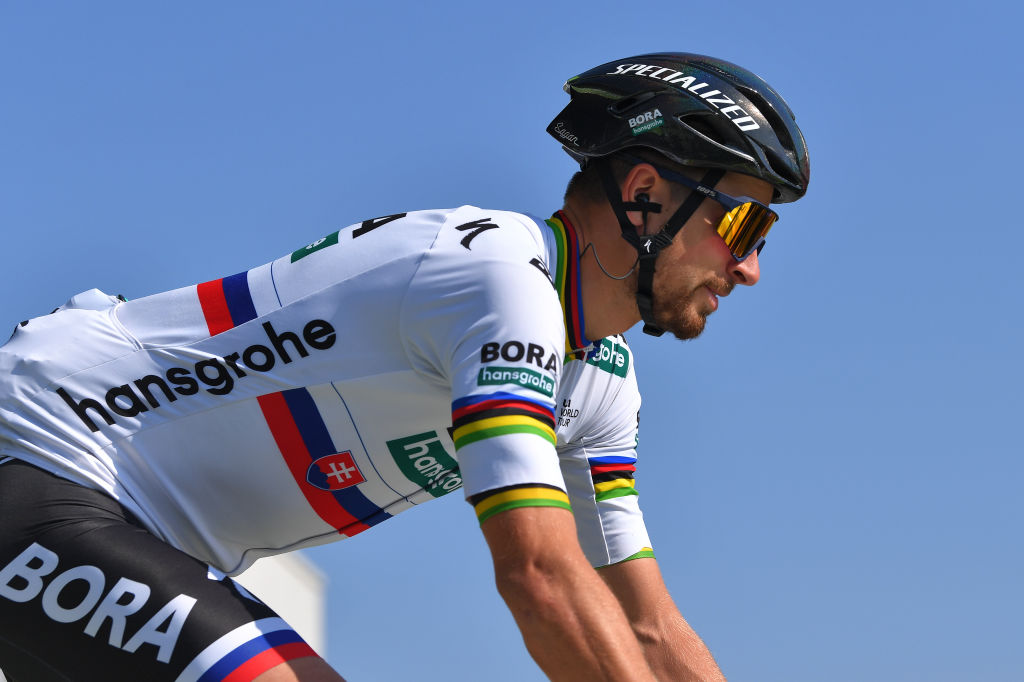
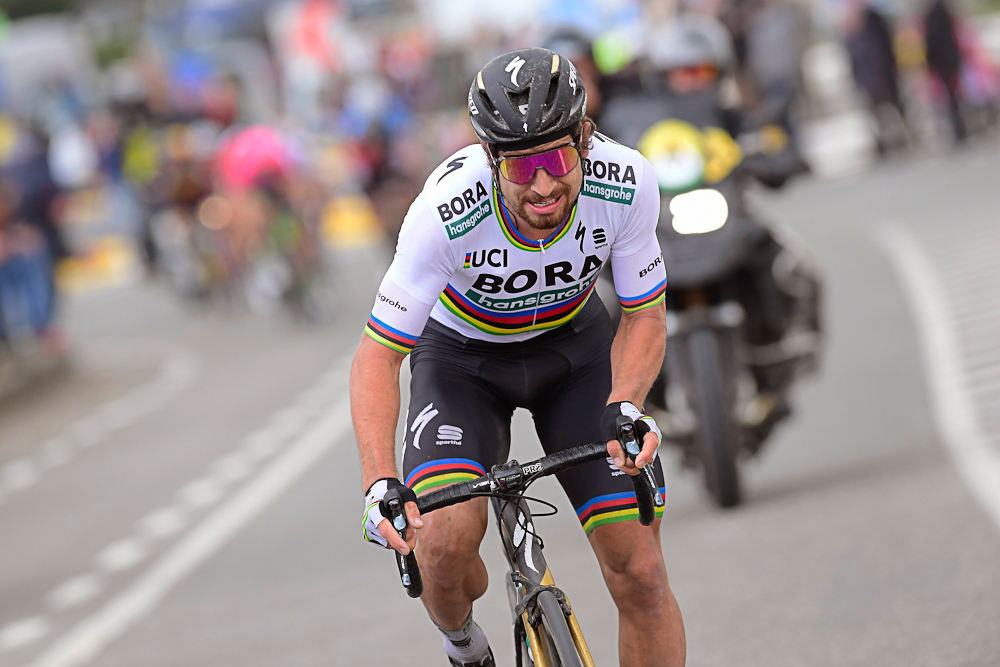
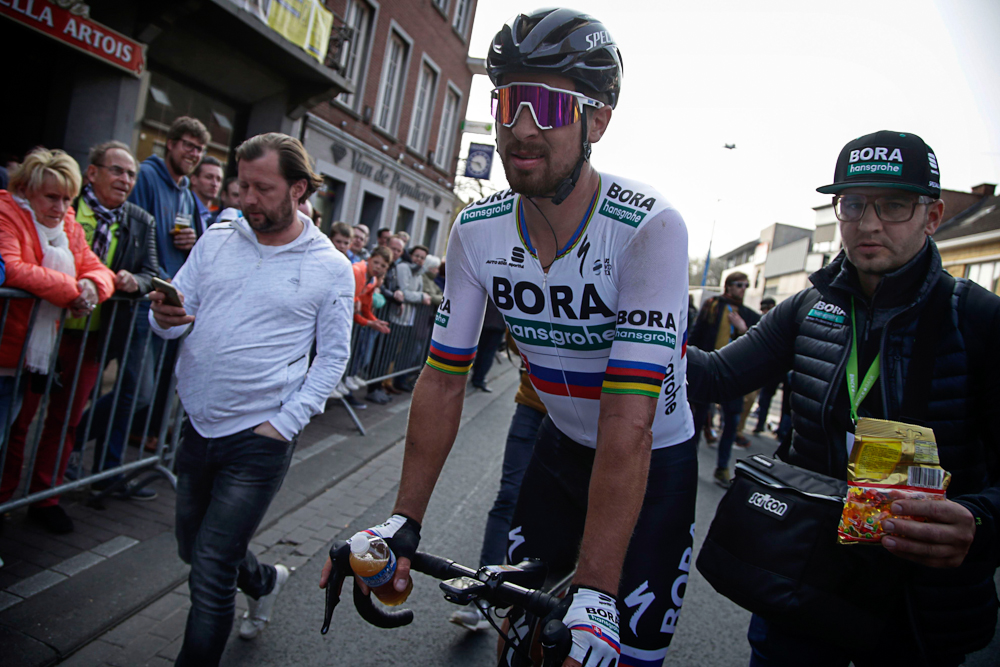
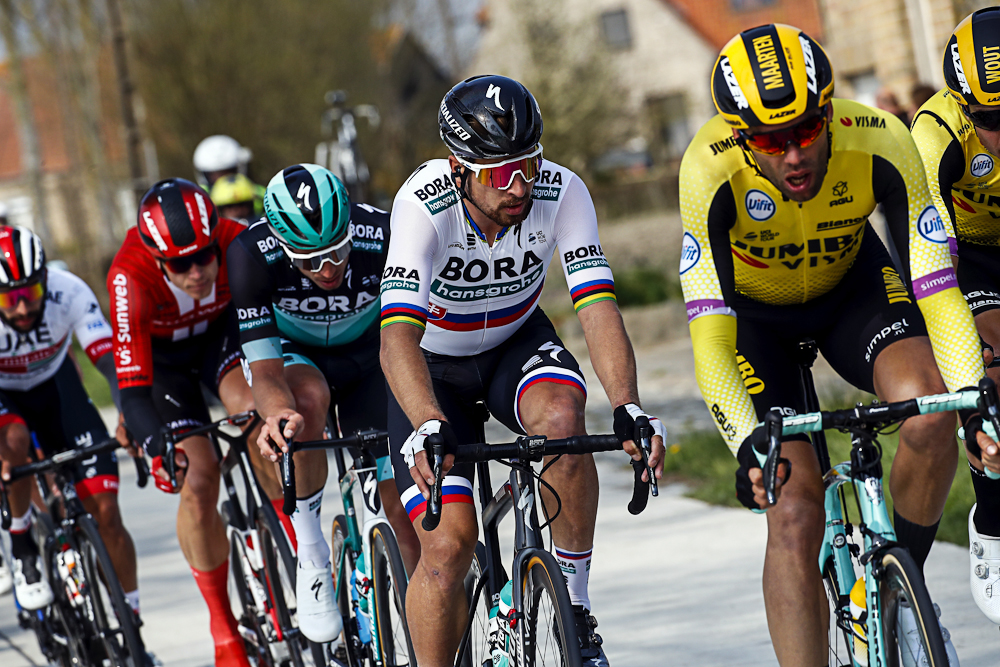
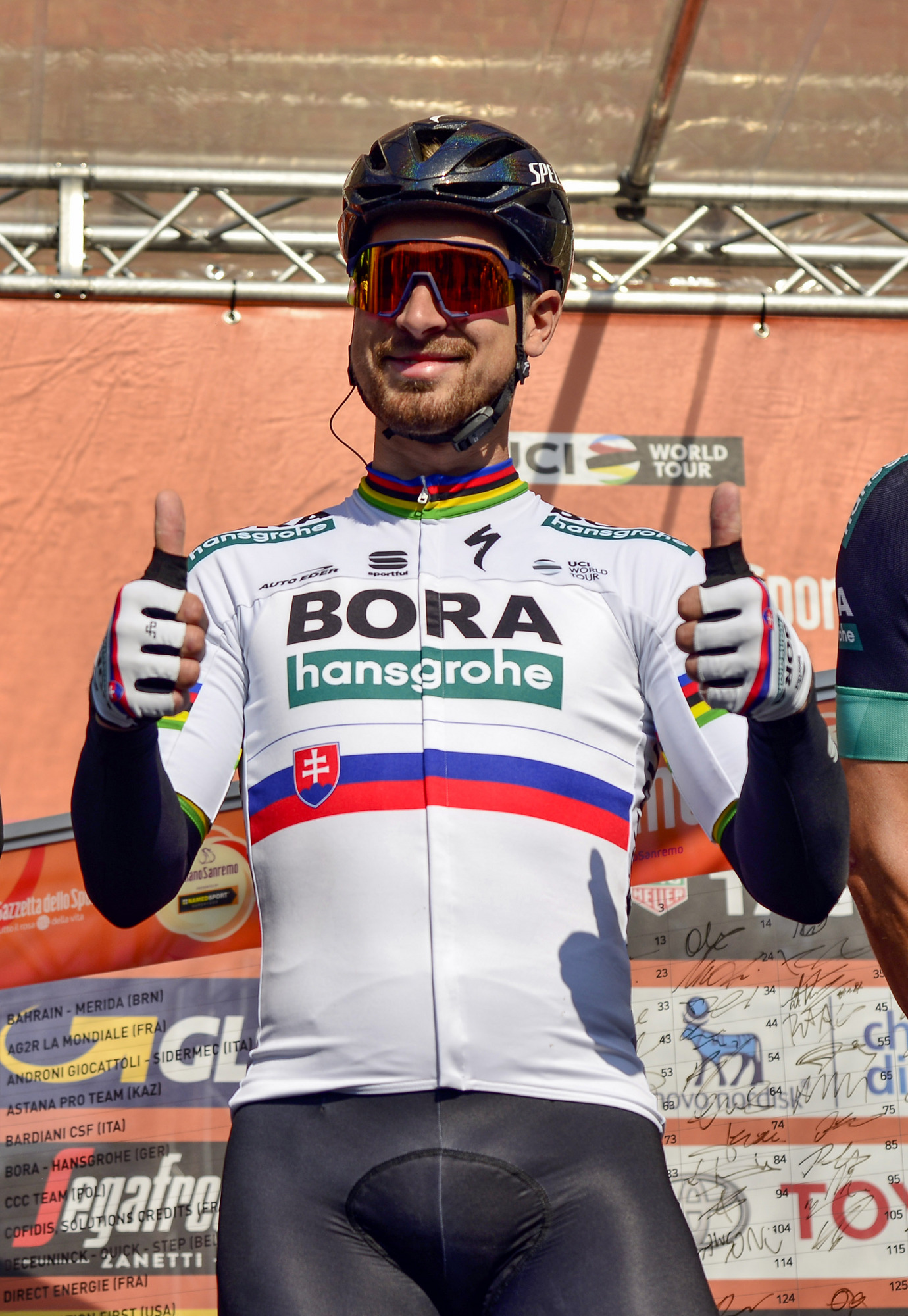
The emergence of cyclo-cross stars Wout van Aert and Mathieu van der Poel and the collective might of Deceuninck-QuickStep are the storylines that dominate in the build-up to the Tour of Flanders, leaving Peter Sagan in an unusual position ahead of the Ronde: out of the direct glare of the spotlight.
One senses that the three-time world champion will not be altogether upset at ceding column inches to some new names this week. Being Peter Sagan – the brand as well as the bike rider – is a heavy burden, after all, and anything that lightens the load, even temporarily, can only be welcomed.
For the second successive year, Sagan has elected to stay in Belgium for the week leading up to the Ronde rather than return to his Monaco base. As in 2018, he opted not to line out at Dwars door Vlaanderen on Wednesday, preferring to put the finishing touches to his preparation for the Ronde by training with teammate Daniel Oss. Fellow contenders Greg Van Avermaet, Zdenek Stybar and Van Aert are following a similar tack.
"It's the same model he followed last year, he's doing all the exercises he needs for his body to recover, and then the right training to get ready for Sunday," Bora-Hansgrohe directeur sportif Jan Valach told Cyclingnews. "It's the second year that he's done this. It depended a little on the weather, we kept an eye on it, and the weather is quite good this week, so he's staying up here and preparing calmly for the weekend."
Sagan's pre-Flanders regimen has again included physiotherapy sessions in Nieuwpoort, in Freddy Maertens country on the North Sea coast, to recover from the rigours of Gent-Wevelgem, ahead of a reconnaissance of the cobbles and hills of the Ronde later in the week. "The races were tough last weekend, but usually he recuperates quickly," said Valach.
In his three years as world champion, Sagan belied the curse of the rainbow jersey by bagging Classic wins ahead of the Ronde – Gent-Wevelgem in 2016 and 2018, Kuurne-Brussel-Kuurne in 2017 – but his first year out of tunic has begun a little less effervescently, a stage win at the Tour Down Under notwithstanding.
Sagan complained of illness ahead of Tirreno-Adriatico, where he appeared more flat-footed than normal in the sprints, while he still looked a little short of his usual sharpness in placing 4th at Milan-San Remo. His challenge at the E3 BinckBank Classic was ruined by a broken derailleur, though Sagan then spent the bulk of Gent-Wevelgem off the front after being part of the elite echelon that broke clear early on. He was one of five survivors who were caught only once they turned into a headwind on the run-in to Wevelgem.
Get The Leadout Newsletter
The latest race content, interviews, features, reviews and expert buying guides, direct to your inbox!
"E3 is the first race he does on the cobbles, you know, and he needs that to warm up because it’s always hard here in Belgium, although he was riding a very good race up until he had that problem with his gears," Valach said, adding that Sagan's display at Gent-Wevelgem warranted a greater reward than his eventual 32nd place. "Unfortunately, the strong wind that split the race became a headwind in the last part, and there were only four of them left up front, so it was impossible to stay away."
Crescendo
While Sagan's final countdown to the Tour of Flanders precisely mirrors last year's, his approach to the entire spring is markedly different. Although he took his usual hiatus from racing to train at altitude in February, he delayed his return to action until Tirreno-Adriatico. Eschewing Opening Weekend and Strade Bianche, Valach explains, was a deliberate choice given that Sagan’s Classics campaign will this year extend all the way to Liège-Bastogne-Liège on the final weekend in April.
"We decided to try this model this year, and like you can see his whole season has been pushed back a little bit," Valach said. "Normally he did Strade Bianche before Tirreno, and as recently as two years ago, he did Kuurne, so everything has been put back a little bit so we can stay here until the Ardennes. It’s one year, and we’ll see what happens."
The plan, then, is for Sagan to be in the mix for victory on any given Sunday in April, starting with the Ronde this weekend. He continues with the defence of his Paris-Roubaix crown next week, before tackling Amstel Gold Race and then making a debut appearance at Liège-Bastogne-Liège, enticed by the new, flatter finale in the city-centre.
Marc Madiot, a staunch admirer of Sagan, told L’Équipe in 2016 that his status was such that he had "the enormous freedom of not being obliged to win in order to exist." Even so, victories are the currency of professional cyclists, but Valach gently dismissed that idea that Sagan’s morale has suffered as a result of going two and a half months without a win. "No, he's calm. He's following his own path and he's ready for what's coming up," he said.
Valach is better-placed than most to assess the current state of the 2016 Ronde winner's form. While still a professional rider, he lobbied the Slovakian federation to support Sagan, who was then an ambitious junior, and he was behind the wheel of the Slovakian team car for each of his Worlds triumphs.
"Crescendo, in one word," Valach smiled. "He's improving. Like last year, he's getting better and better with each race, and by the Ardennes he was really very strong. We're expecting something similar this year."

Barry Ryan was Head of Features at Cyclingnews. He has covered professional cycling since 2010, reporting from the Tour de France, Giro d’Italia and events from Argentina to Japan. His writing has appeared in The Independent, Procycling and Cycling Plus. He is the author of The Ascent: Sean Kelly, Stephen Roche and the Rise of Irish Cycling’s Golden Generation, published by Gill Books.